Search engines have become unavoidable for searching and finding information about a company. And today, more and more consumers inform themselves on the web before buying a product or service. So if you are not on the web, you’re cutting yourself off from a lot of (future) visitors!
Having a website is no longer an option, but a must in order to meet your various audiences.
But in practical terms, what are the advantages in creating your own website?
- be visible 24 hours a day, 7 days a week
- develop the brand awareness of your museum and gain visibility;
- increase the number of visits to your museum and therefore your sales revenue;
- sell online the products of your store, via an e-commerce site;
- get to know and better understand your audience in order to adapt your communication and your service offering;
- provide a better customer service by adapting your content to your various audiences (fans, future visitors, youngsters, teachers, sponsors, etc.) and in several languages.
How to proceed
From its architecture to its design and the choice of a domain name, the creation of a website needs to comply with a certain number of basic steps for it to be effective and best meet your expectations and those of your targets.
Where should you start? We explain everything in 7 steps!
Get support to create your website
If you do not have the computer skills to create a website for your museum, you have two options:
- Call an independent designer or a specialized design agency. They will deliver a turnkey website tailored to your needs and requirements. This type of service costs between one thousand and several thousand euros.
- Use a platform for creating websites. You choose a pre-customized template that you can then configure. It is a cheaper method than the previous one but requires more personal investment.
Choose a relevant domain name
In order for your website to be found, it must be attached to an internet address. This is what is called a domain name. It is an integral part of your identity, since it allows your future visitors to immediately identify your institution.
We advise you to have your own domain name and not an address containing the name of a platform. This will make you more credible and be taken more seriously.
For the purposes of search engine optimization and to be more visible to your audience, opt for a short, striking name. Avoid using multiple dashes and numbers, which search engines do not like.
Once you have found your ideal name, and if it is available, quickly register it with a registrar. The ownership of your domain name will then have to be renewed each year.
Opt for an internet suffix ending in .museum
In addition to choosing your domain name, you can say more about your business by opting for a relevant suffix. It will avoid burdening your domain name with a keyword associated with your activity.
For your museum business, we recommend an internet address under the .museum gTLD. This suffix, which uses a striking, unequivocal and globally understood term, makes you easily identifiable by your visitors. It means you send a message to users even before they have visited your website.
Take care with the content of your website
To present your activity on your website, you need to respect a few basic rules.
For example, for a museum, your site should at least contain the following pages: a home page, a presentation page of your institution or a services page.
It is also crucial to display your full contact details so that visitors can come to see you or contact you. Visibly display your mailing address, phone number and email address. A map for visitors to locate you and easily find their way is also a wise step.
A Frequently Asked Questions (FAQ) section may also be useful, so that users can find answers to their questions themselves, even when you are closed.
Above all, remember that browsing your website must be simple and intuitive.
To make sure that is the case, remember to apply the 3-click rule. This principle of ergonomic design states that users must be able to access the targeted page by clicking on three links at most.
Think about design and ergonomics
Your website must have a neat, quality design, to better reflect the personality of your institution or your project.
The graphics must be uncluttered and the use of visuals is highly recommended because they will attract the user’s eye. If the graphic style is pleasant, visitors will want to continue their visit to find out more. The choice of a Style Guide is a step not to be neglected. Be careful, however, to optimize the weight of the images used. If the website loading time is too long it can incite users to leave, which would be a shame!
Finally, make sure your website properly adapts to tablet and smartphone screens. This principle, called responsive design, means your website is accessible on any screen size.
Draft your legal disclaimers
In addition to being mandatory from a legal point of view, displaying legal disclaimers on your website (usually at the bottom of the page) allows you to indicate to visitors your identity.
It is also advisable to post a personal data protection charter to inform visitors about the collection and use of their information (cookies, email address).
In addition, your terms of service (TOS) are useful to indicate your rights and responsibilities, those of the users, ownership of the content, and the conduct for using the website.
If you sell products or services on your website, you must display the general terms and conditions of sale (GTC). Customers must accept them before any transaction in order to signify their agreement about the sale (payment and delivery terms, right of withdrawal, etc.). The GTC will serve as a contract between the two parties.
Analyze the traffic to your website
Observing the activity and data of your website is essential in order to measure its performance.
There are many solutions for collecting statistics about your audience: Matomo (formerly Piwik), Heap, Clicky, Google Analytics, etc.
These tools provide you with various use data: visitor profiles, click rates, page views, consultation times, etc. This allows you to know your audience better and to find out what interests them most, to measure your return on investment and to decide on the next actions to be implemented. You invest your time (and money!) more intelligently…
*We Are Social and Hootsuite Digital Report, 2018



